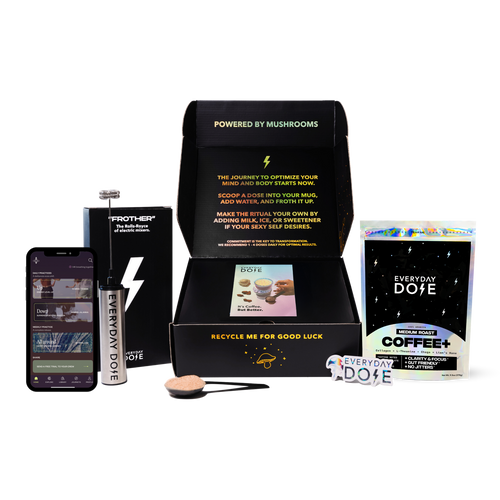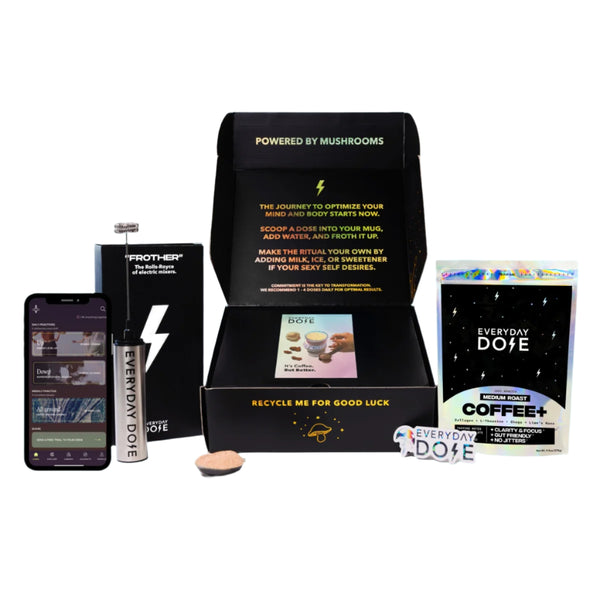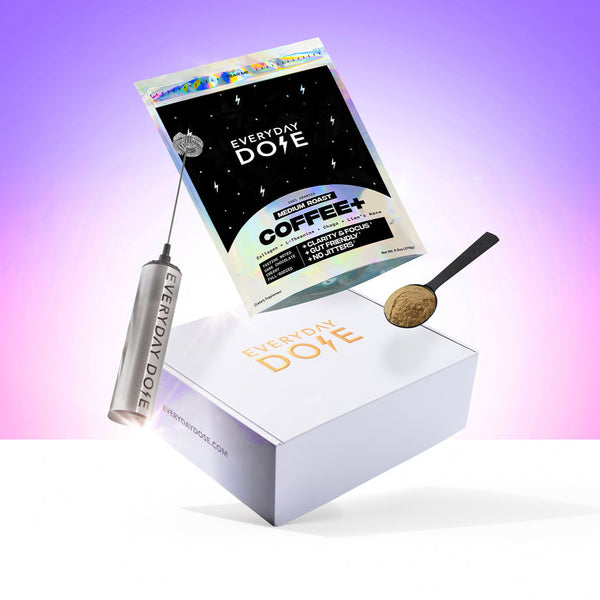Does Matcha Lower Blood Sugar? A Scientific Look

Matcha is everyone’s favorite tea — after all, it’s easy to love a drink that shows so much love in return. Some people drink matcha for its delicious earthy flavor, while others drink it for its ability to support energy or relaxation. However, these aren’t the only reasons everyone marvels at matcha.
This tasty tea can also help support healthy blood sugar levels, which makes it a great choice for anyone looking to encourage their metabolism. Read on to learn six key ways matcha can support blood sugar, as well as how to start taking it.
What Is Matcha?
Matcha is a type of tea made from powdered green tea leaves. This technically makes matcha a type of green tea. However, it’s better to think of matcha as green tea’s older sibling.
When you make a cup of green tea, you steep the leaves in hot water before removing them and drinking the infusion left behind. However, matcha is made by stirring the tea powder into hot water and letting the powder dissolve.
This might not seem like a big difference, but the effects can be pretty major. With regular green tea, you’re only drinking whatever nutrients are able to absorb into the water during the short steep time. With matcha, you’re drinking the actual leaves themselves, including all of the nutrients in them.
When it comes to all of the great compounds available in tea, the more the merrier! Green tea is home to antioxidants like polyphenols and catechins, L-theanine, and caffeine. Matcha has significantly higher levels of these nutrients than green tea and it even contains quite a bit of fiber per serving.
How Matcha Impacts Blood Sugar Levels
If matcha is a regular part of your morning routine, chances are you might not be thinking about your blood sugar every time you drink it. In fact, many people don’t think about their blood sugar in general.
However, blood sugar is one of the most important elements that make up your metabolism, and it doesn’t hurt to support healthy blood sugar levels whenever you get the chance. Read on for a breakdown of the different ways matcha can support blood sugar.
1. Supporting Insulin Sensitivity
Matcha contains a particular catechin called epigallocatechin-3 gallate (EGCG), which can have huge health benefits. It can support insulin sensitivity, helping cells soak up glucose more effectively, and steers insulin resistance to the curb. Studies show that EGCG specifically shines in supporting healthy fasting glucose and even encouraging a normal HbA1c.
2. Influencing Sugar Absorption
Matcha works like a traffic controller for glucose, slowing its absorption in the small intestine. By interacting with glucose transporters, it can help keep your blood sugar stable even after meals. This could be due to the high fiber content of matcha, as fiber has been shown to prevent blood sugar spikes.
3. Encouraging Glucose Metabolism
Matcha can interact with the enzymes that break carbs into sugars, like amylase. This can help sugar enter your bloodstream more gradually, preventing those energy spikes and crashes. Overall, this can help keep you from the brain fog and tiredness that can come with blood sugar spikes.
4. Offering a Low-Calorie Treat
When it’s prepared traditionally (by mixing powder with hot water), matcha is pretty much calorie-free. It can brighten your day without adding a single calorie, making it a guilt-free, blood sugar-friendly drink. Forget sodas and syrupy lattes — start your day with matcha instead.
5. Supports Weight Management
Matcha can help support fat oxidation, turning stored fat into fuel while encouraging weight loss. Since weight is directly tied to blood sugar levels, this can help support an overall healthy metabolism. This metabolic support can help support insulin sensitivity and encourage balanced glucose levels.
6. Stress Reduction
Chronic stress can wreak havoc on blood sugar — luckily, the L-theanine in matcha can help ease feelings of stress. This amino acid can support feelings of relaxation without drowsiness, soothing stress-induced cortisol spikes that can disrupt your blood sugar.
How Can You Start Drinking Matcha?
The good news is that matcha is incredibly easy to make and even easier to enjoy. To make it, simply combine hot water with the tea powder and whisk it with a bamboo whisk or a milk frother. Of course, you can also transform it into a matcha latte with some dairy milk or almond milk, if you’re watching your carb intake.
That’s not all, though. This botanical bestie is ultra-versatile. You can mix it into smoothies, overnight oats, ice cream, and more — as long as you’re following your doctor’s advice about carb intake.
If you want some extra blood sugar support, consider our Mushroom Matcha+. This blend features matcha and all of its wonderful benefits, as well as lion’s mane mushroom for gut health, extra L-theanine for mental health, collagen protein, and chaga mushroom to further support blood sugar and immunity. The best part is that it’s even easier to make than traditional matcha! There’s literally no reason not to give it a try.
The Bottom Line
Here at Everyday Dose, we love matcha — and not just because of its trendy bright color and yummy flavors. The reason matcha made it into our selection of mushroom blends is because of all its wonderful health benefits.
There’s a reason this drink has been around for centuries, after all. If you want to try the magic of matcha for yourself, we have just the blend for you. Check out our other mushroom blends as well, and don’t forget to stop by our blog for more health tips.
Sources:
Matcha Green Tea Drinks Enhance Fat Oxidation During Brisk Walking in Females | PubMed
Start your day
The Right Way









